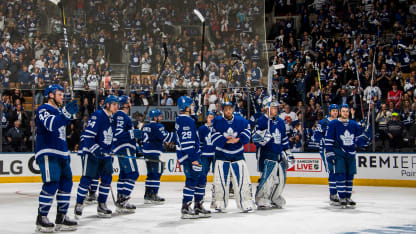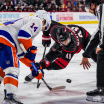TORONTO -- The Toronto Maple Leafs jumped from a 30th-place finish in 2015-16 to a berth in the Stanley Cup Playoffs in one season. Their reward was playing the Presidents' Trophy-winning Washington Capitals in the Eastern Conference First Round.
Although the Maple Leafs led the best-of-7 series 2-1, the Capitals won the next three games to win it in six.
"We got to play a really good team, a well-coached team with real good players, and got to find out where we're at and where our players are at," Maple Leafs coach Mike Babcock said. "Until you've been through the playoffs with players, you don't really know the level of the player you have and so you learn a lot about your team. I'm really proud of our guys."
Here are 5 reasons the Maple Leafs were eliminated:
5 Reasons: Why Maple Leafs were eliminated
Playoff inexperience, power-play struggles led to Toronto being defeated by Capitals in first round

© Mark Blinch/Getty Images

















